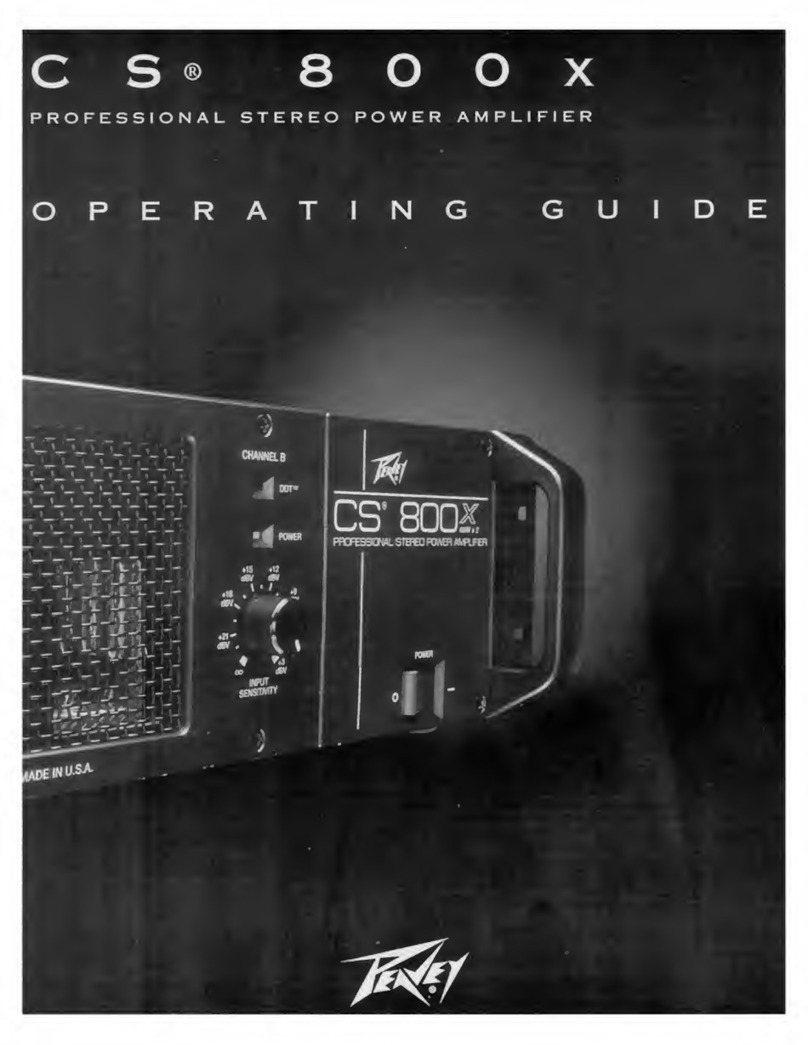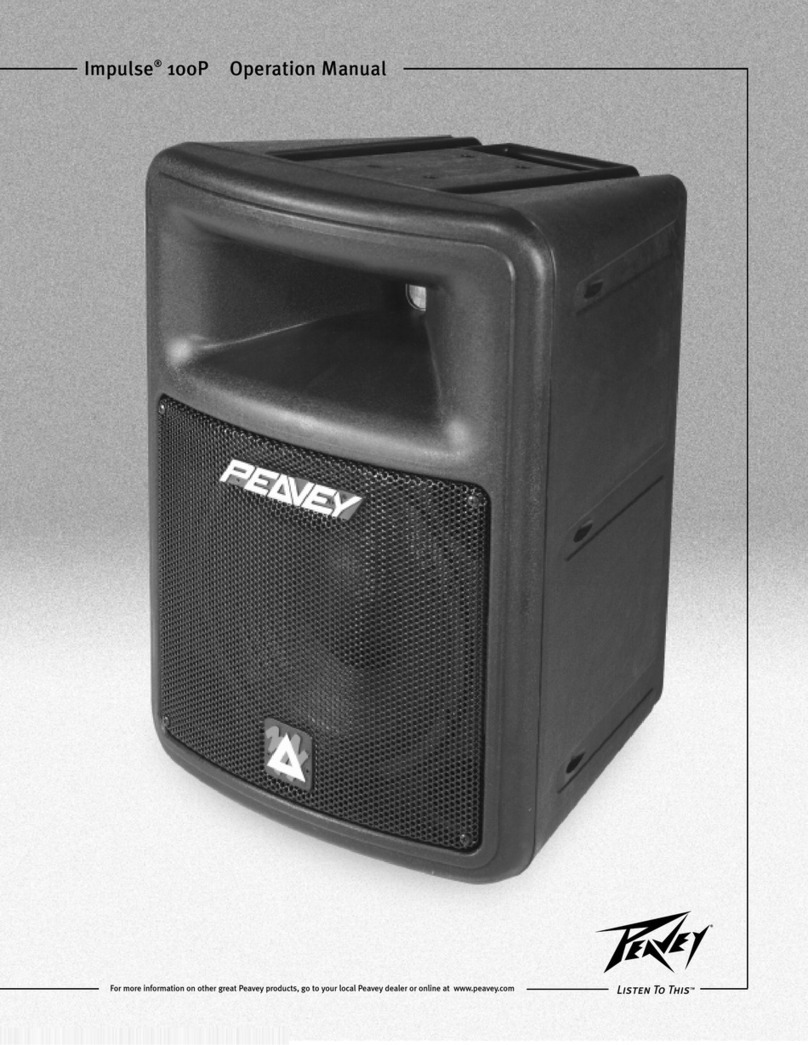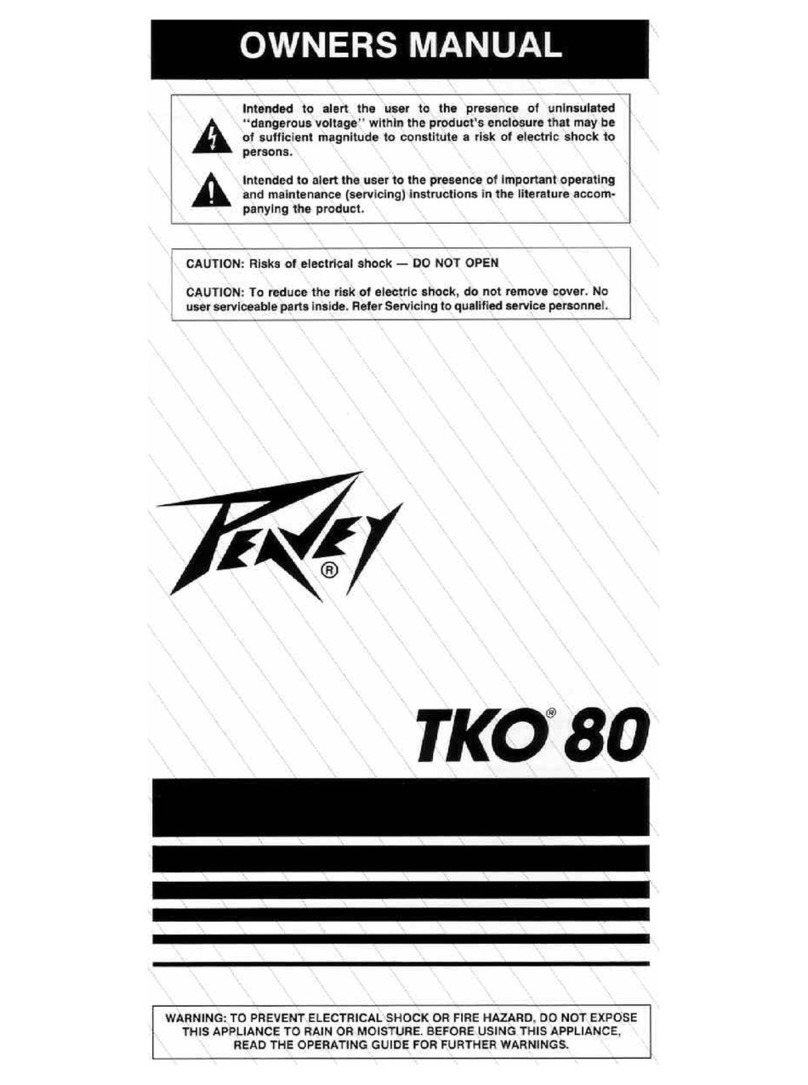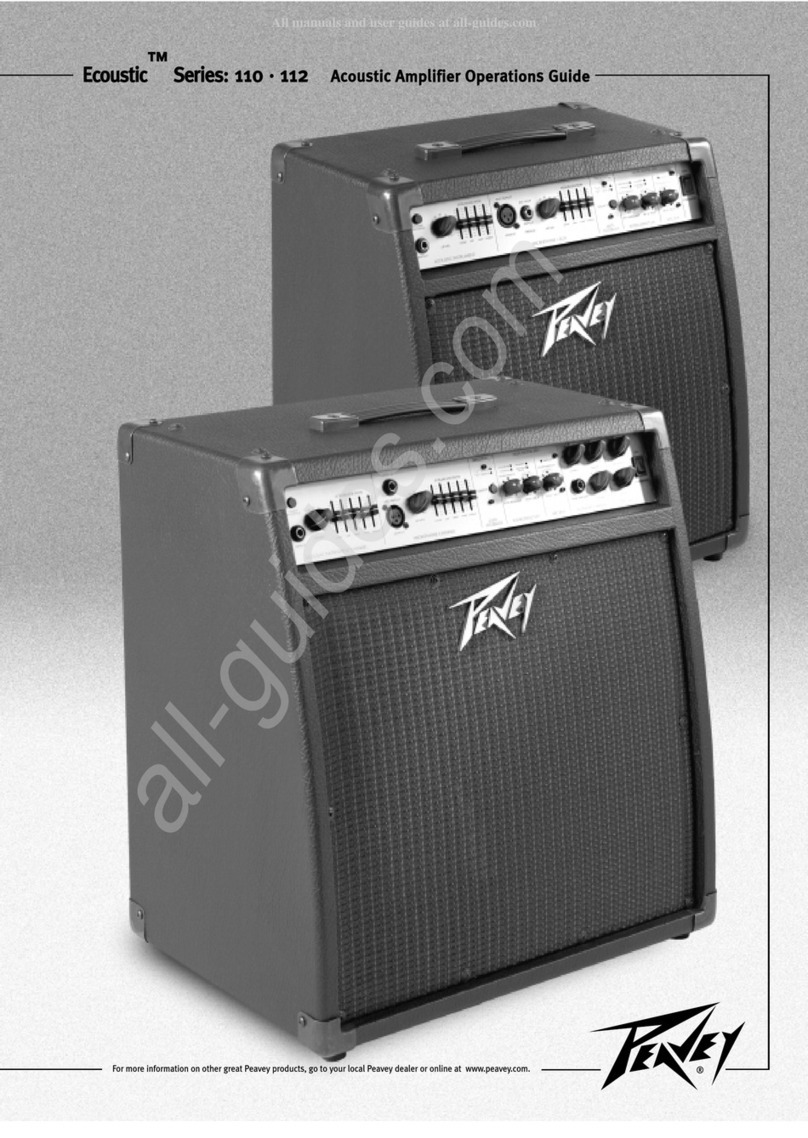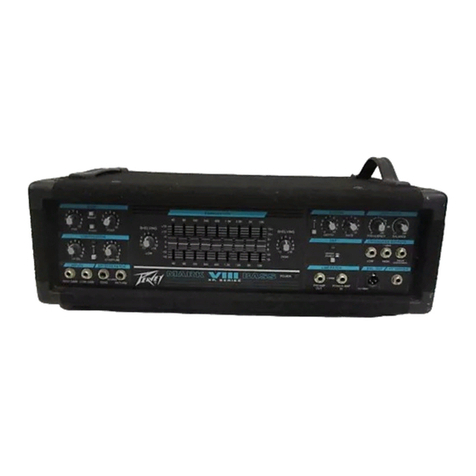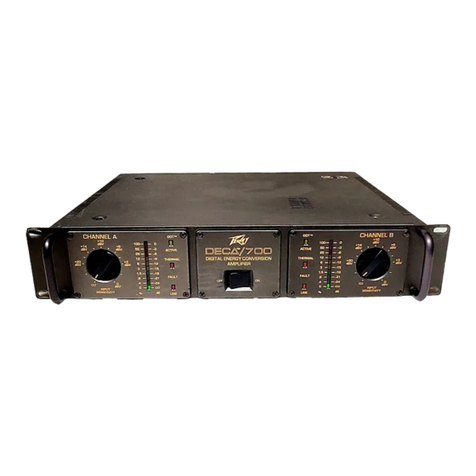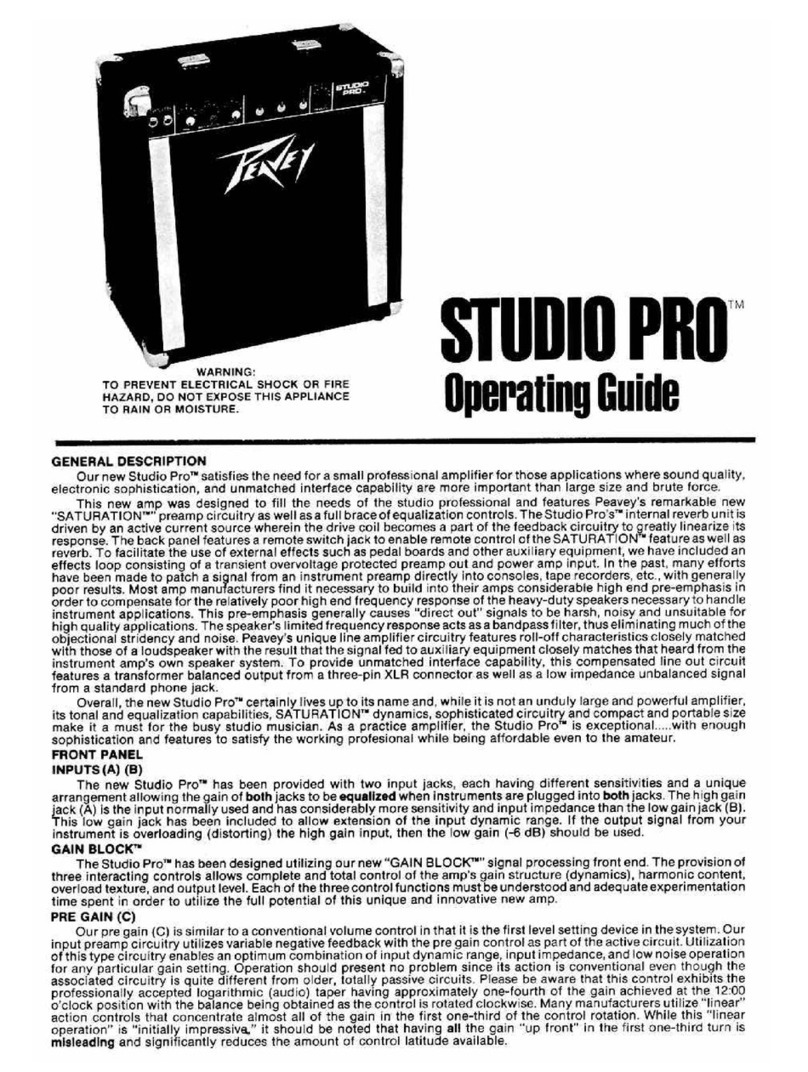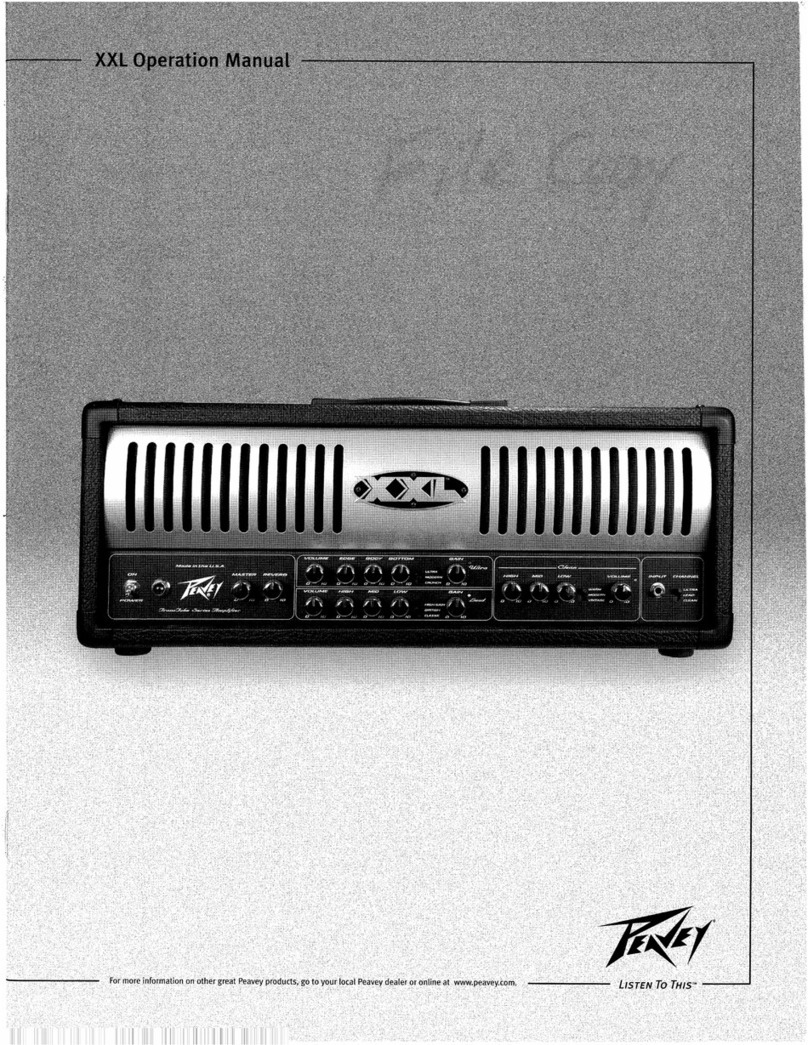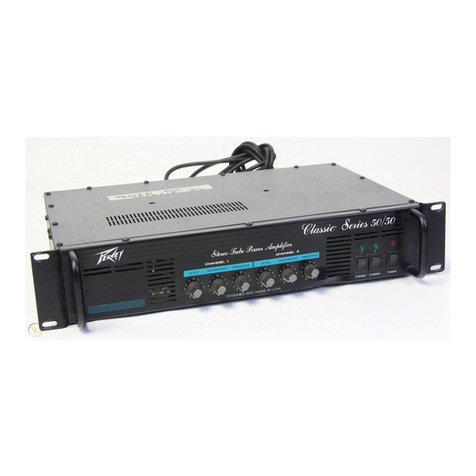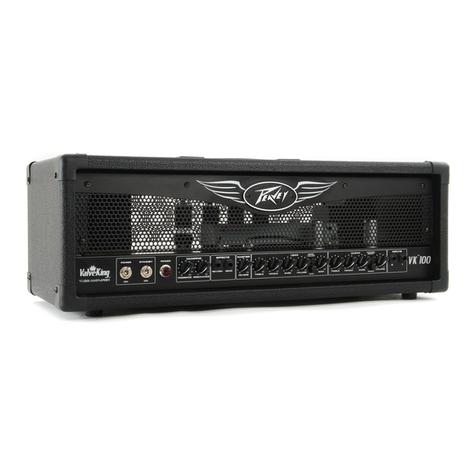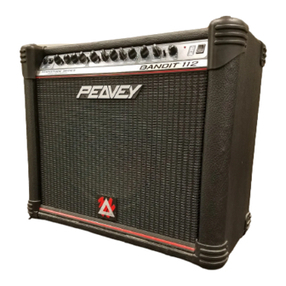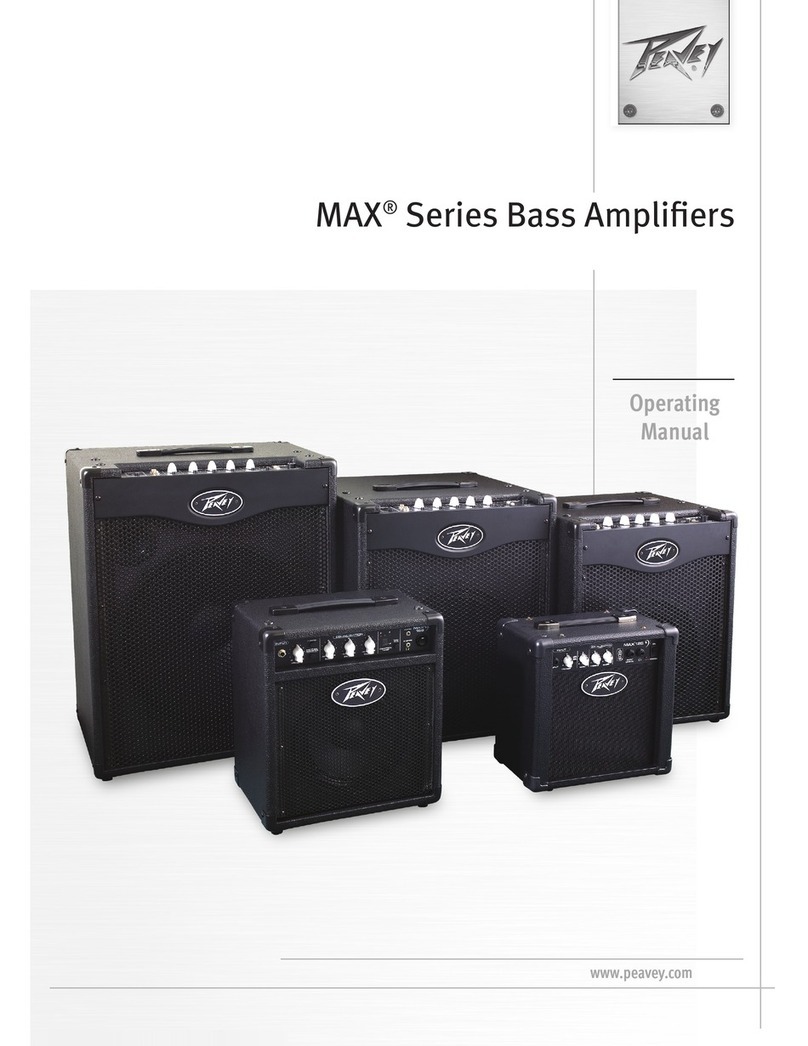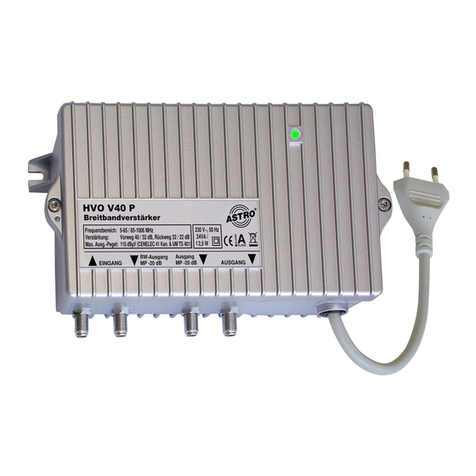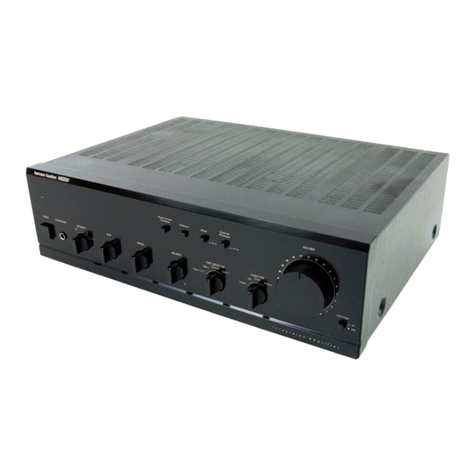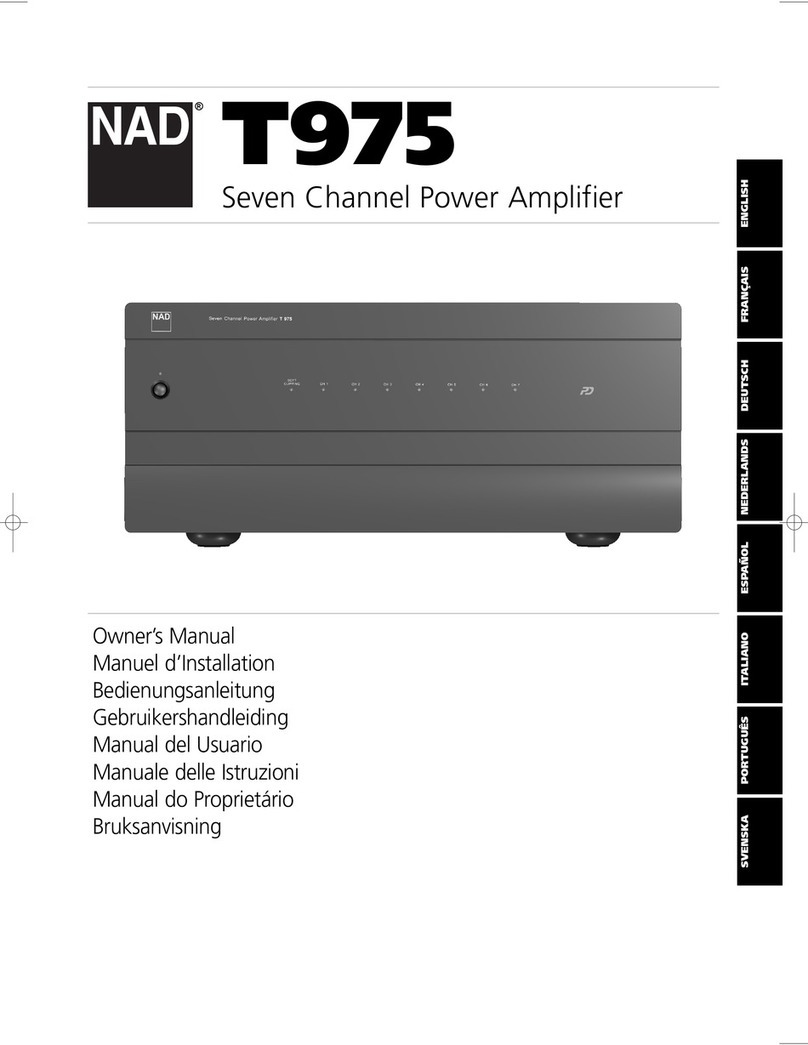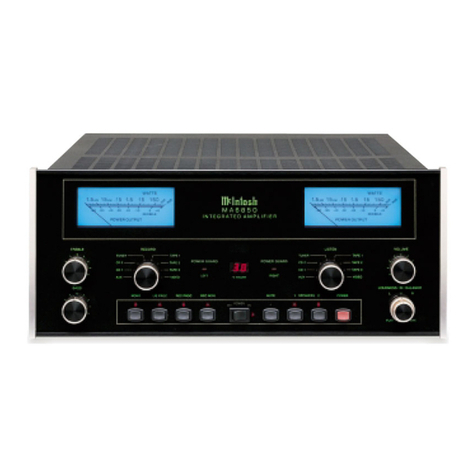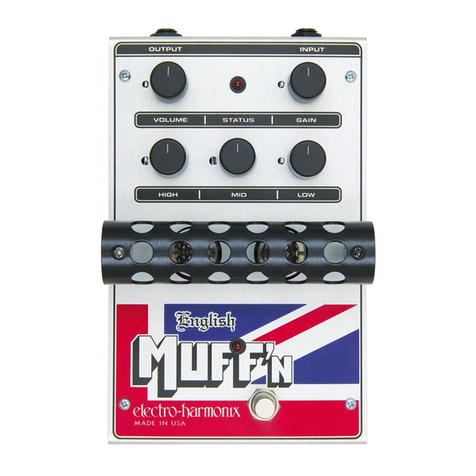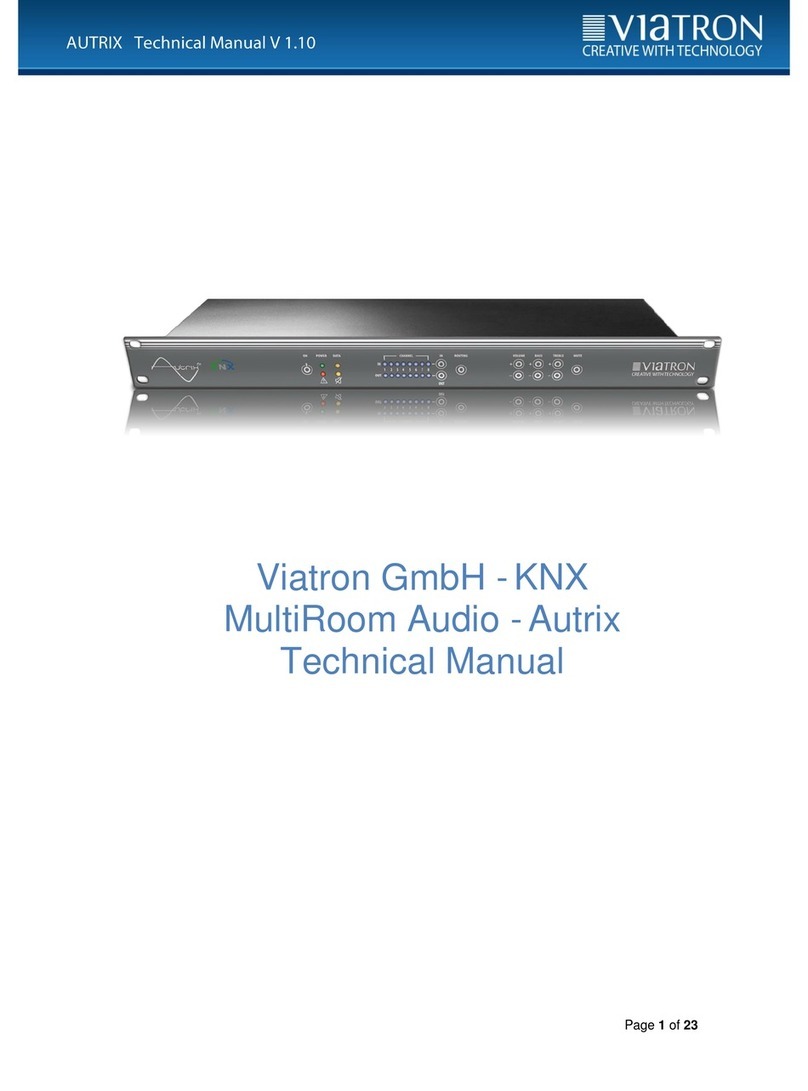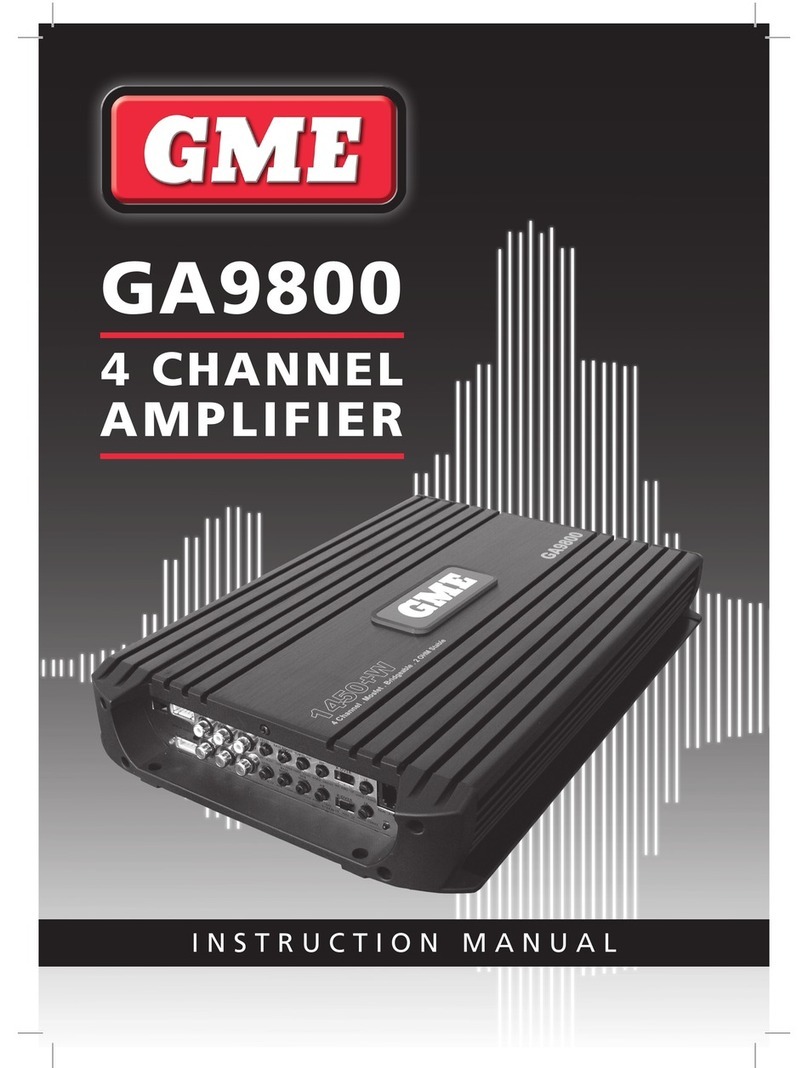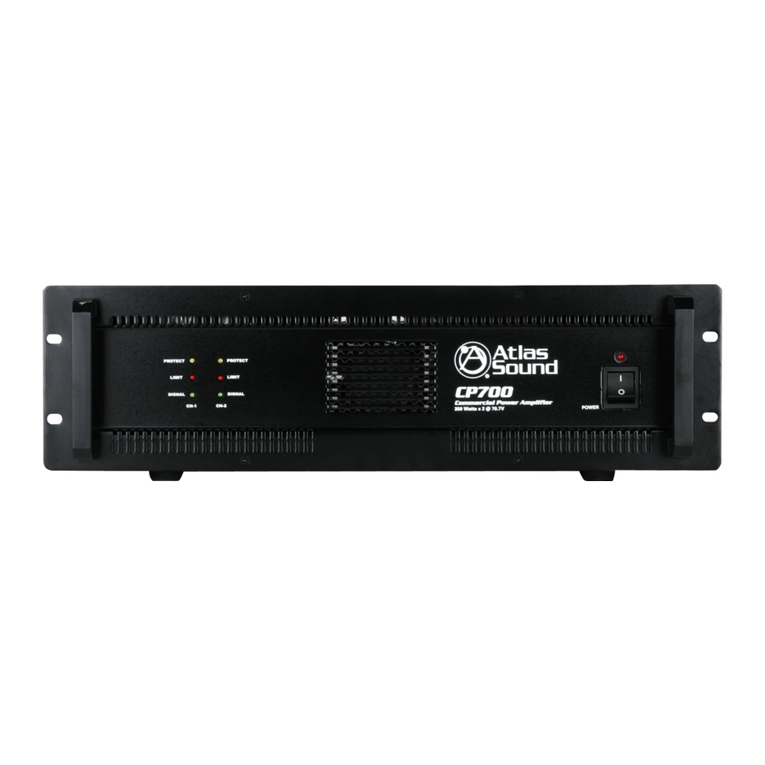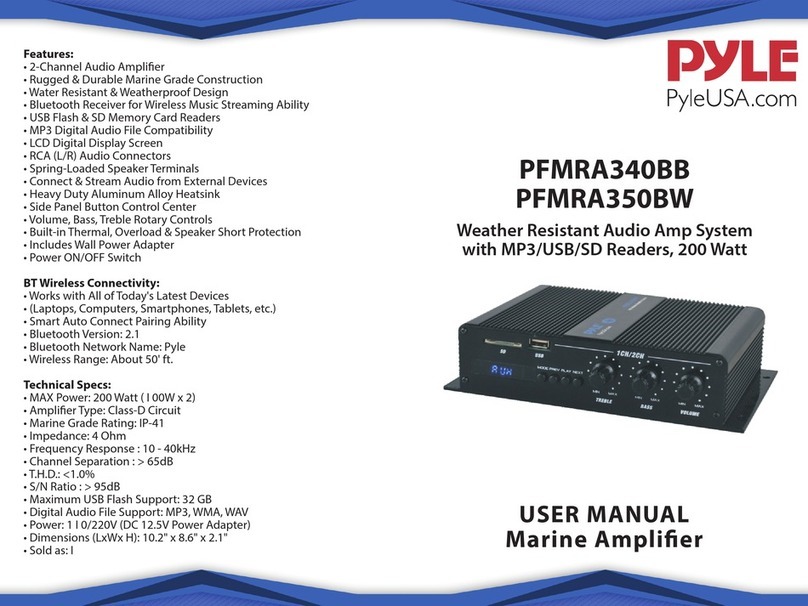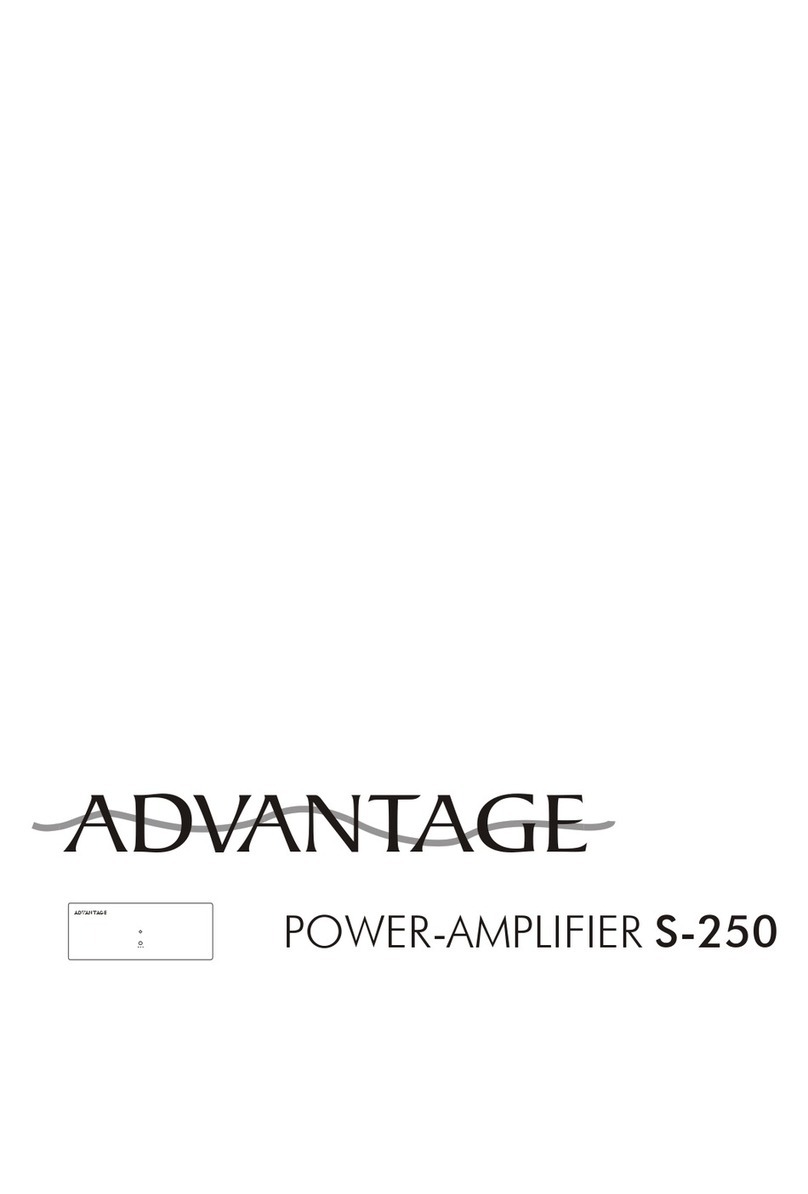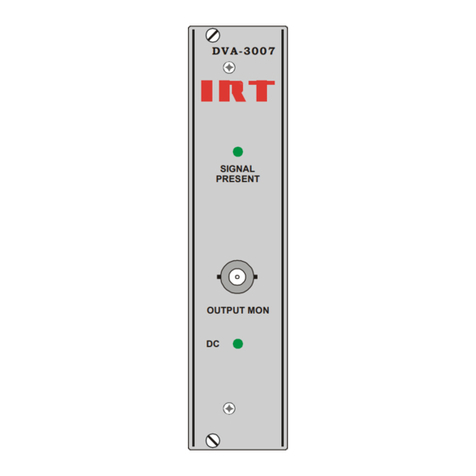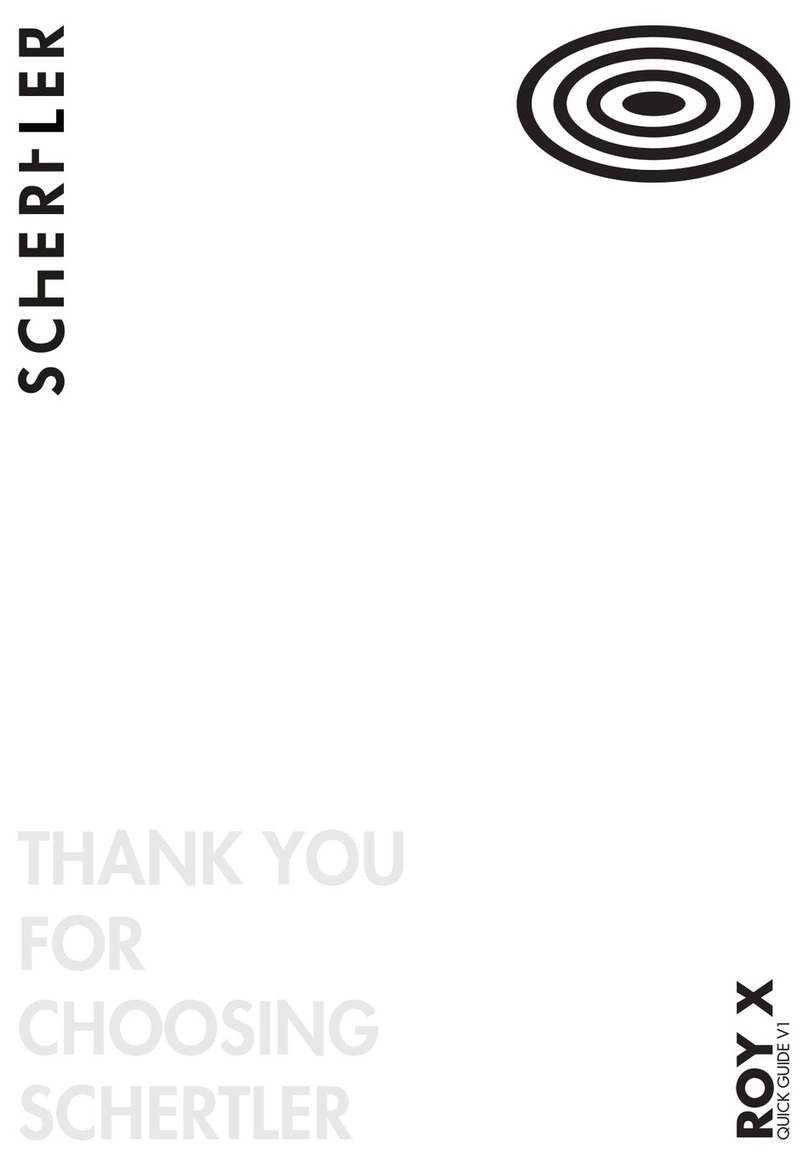
STUDIO
PRO'"
40
SPECIFICATIONS
Power
Amplifier
Section;
Rated
Power
&
Load:
40
W
RMS
into
8
ohms
Power
at
Clipping:
(Typically
5%
THD,
1
KHZ.
120
Vac
line)
25
W
RMS
into
16
ohms
45
W
RMS
into
8
ohms
40
W
RMS
into
4
ohms
2
ohms
not
recommended
Frequency
Response:
+0,
-2
dB,
60
Hz
to
20
KHz
@
40
W
RMS
into
8
ohms
Total
Harmonic
Distortion:
Less
than
0
2%,
100
mW
to
40
W
RMS
60
Hz
to
10
KHz,
8
Ohms,
typically
below
0.1%
Hum
&
Noise:
Greater
than
90
dB
below
rated
power
Power
Consumption:
(Domestic)
150
watts,
50/60
Hz,
120
Vac
Preamp
Section:
The
following
specs
are
measured
@
1
KHz
with
the
controls
preset
as
follows:
Pull
Bright
Off
(In)
Saturation'"
@
0
Post
Gain
@10
Low
&
High
EQ
@
10
Mid
EQ
@
0
Pull
Thick
Off
(In)
Reverb
@
0
Nominal
Levels
are
with
Pre
Gain
@
5
Minimum
Levels
are
with
Pre
Gain
@
10
Preamp
Jack
“A"
Input:
Impedance:
High
Z.
220K
ohms
Nominal
Input
Level:
-28
dBV,
40
mV
RMS
Minimum
Input
Level:
-46
dBV,
5
mV
RMS
Maximum
Input
Level:
+4
dBV,
1.5
V
RMS
Preamp
Jack
“B”
Input:
Impedance:
High
Z,
44K
ohms
Nominal
Input
Level:
-22
dBV,
80
mV
RMS
Minimum
Input
Level:
-40
dBV,
10
mV
RMS
Maximum
Input
Level:
+10
dBV,
3
V
RMS
Preamp
Output:
Load
Impedance:
IK
ohms
or
greater
Nominal
Output:
0
dBV,
IV
RMS
Line
Output:
Load
Impedance:
1K
ohms
or
greater
Nominal
Output:
-10
dBV,
300
mV
RMS
Power
Amp
Input:
Impedance;
High
Z,
22K
ohms
Designed
Input
Level:
0
dBV,
IV
RMS
System
Hum
&
Noise
@
Nominal
Input
Level:
(20
Hz
to
20
KHz
unweighted)
70
dB
below
rated
power
Equalization:
Special
low,
mid
&
high
passive
EQ
circuitry
Pull
Bright:
+6
dB
@
2
KHz
Puli
Thick:
Special
EQ
Footswitch
Features:
Reverb
function
defeated
Saturation'"
function
defeated
Due
to
our
efforts
for
constant
improvement,
features
and
specifications
are
subject
to
change
without
notice.
DANGEH
EXPOSUAg
TO
extremely
HIOH
NOiSE
LEVELS
MAY
CAUSE
A
PERMANENT
HEARING
LOS$
INOlVlOUALS
VARY
CONSIDERABLY
IN
SUSCEPTIBILITY
TO
NOISE
INDUCED
HEARING
LOSS.
BUT
NEARLY
EVERYONE
WILL
LOSE
SOME
HEARING
IF
EXPOSED
TO
SUFFICIENTLY
INTENSE
NOISE
FOR
A
SUFFICIENT
TIME.
THE
U
S
GOVERNMENT
S
OCCUPATIONAL
SAFETY
AND
HEALTH
ADMINISTRATION
(OSHA)
HAS
SPECIFIED
THE
FOLLOWING
PERMISSIBLE
NOISE
LEVEL
EXPOSURES
DURATION
PER
DAY
IN
HOURS
BOUND
LEVEL
dBA.
SLOW
RESPONSE
6
90
6
92
4
9S
3
97
2
100
I'rV
102
1
105
lie
V*
Of
less
.fC.-U35!
.....
.K
ACC0RDlNG,IO3SS'l^iiM»IY
EXPOSURE
IN
dCESS
OF
THE
AeO<««i6RMISSIBLE^I:TS
MEAftdJ©
LOSS
^
^si?gj
EAR
PLUG^^kl^dflef^
IN
The
ear
OVER
THB^U^MUST
BE
SYSTElE^Gii£ti<3C^P^ENT
A
MEAF^I^M^SS
IF
EXP0SUFi&it$i|MxCE^=^7l|^
LIMITS
ABOVE
AGAIN^^^ENfiAtLVt^ttlB^AOUS'EXPO&U^-TO
HlQK-iMH^'PRESStWfg^ELS.
ALL
PERSONa.BXlibSED
TO
EGbSiJ^NT
CAPASL^-OF'^TOOUCINC
E«<J»$«0UND
LEVELS
SUCM^THIS
AWPLlFB^TlOM
5YgE»3eW'OE
PROT£CTEiD0¥;:HEARlif^'i*i^¥Sl^TORS5#i^
THIS
UNIT
IS^^^OPCRATION
THIS
AM^^JgR
HANDLK^^qSp£^AS10NAL
_
_
_
____
_
...
...
RECOmMSF^ED
since
THlKlSfCOULD
LO^C^PEAKER
SYSTEM
PLEASE
BE^AwAFlE
1
Read
belOfe
oroduct
?
;
EdstlJ^NT
CAPASL^-OF'^TOOUCINC
E«<^tOUND
levels
SU9«i^THI5
AWPLlFfl^TlOM
5Y5^jifi&E
PROT£CT^?p^YjHEARI^|!|^^|^TORS^^ft|^
HAS
BEEN
DESlGNECNWi&^ONSlf^TED
Ta^SCWlOE
ADEO^J^POWER^ESrat^jOR
PLAYINQ^i^EflN
WHICH
MAY
rI^RJIRE
odlOii^^NAi”P©LK'P^'feR
TO
ONAL
PEAK
POWER.r«WI€QUAT€.J»OW!eP
HAS
BE»tfS?CSlGNED
INTfetT’rtK
SYSTEM
EjCT^WED
OB^TiON
AT
ABS(2t^jyi&MAXl(!il!lfl^fOW^t.Sv^
NOT
-
-
---
r,.
UAXfllil^-POWEttl^MeE
O0TA[NEO^|ih
VEfirjl^kl^SETTrN^it^Tp^e
GAIN
1
^
cr.
ilh*f
Hn
AnT
Hc
are
product
All
$afely
and
operating
instructions
should
be
retained
lor
future
reference
Obey
all
cautions
m
the
operating
instructions
and
on
die
back
of
the
unit
All
operating
instructions
should
be
followed
This
product
should
not
Pe
used
near
water
i
e
a
bathtub
sink
swimrning
pool
wet
bascmeni.
etc
This
product
should
be
located
so
that
its
position
does
r^ol
interfere
wUh
its
proper
ventilation
It
should
not
be
placed
flat
against
a
wall
or
placed
m
a
built-in
enclosure
that
will
impede
the
flow
of
cooimg
air
This
product
should
not
be
placed
near
a
source
of
heat
such
as
a
stove
heater
radiator
or
another
heal
producing
amplifier
*
power
supply
^t^^pe
marked
onUMlifnit
We
power
supply
conC..'
•
•
::?•
9
Never
break
off
the
ground
pin
on
the
power
supply
cord
For
more
information
on
grounding
write
lor
our
free
booklet
‘Shock
Hazard
and
Grounding
‘
Power
supply
cords
should
always
be
handled
carefully
Never
walk
or
place
eOu'pment
on
power
supply
cords
Periodically
check
cordsfor
cuts
or
signs
of
stress
especially
at
the
plug
and
the
point
where
the
cord
exits
the
umt
The
power
supply
cord
should
be
unplugged
when
the
unit
is
to
be
unused
tor
long
periods
of
bme
Metal
parts
can
be
cleaned
with
a
damp
rag
The
vinyl
covering
used
on
some
units
can
be
cleaned
with
a
darnp
rag
or
an
ammonia
based
household
cleaner
It
necessary
10
12
so
thari^i^is
do
noi
raD^^^ids
are
the
unit
thrOtf^^ilhe
ventilationhtifto
or
any
other
openings
This
umt
should
be
checked
by
a
qualified
service
technician
if
A
The
power
Supply
cord
or
plug
has
been
damaged
S
Anything
has
fallen
or
been
spilled
mio
the
unit
C
Tne
unit
does
not
operate
correctly
D
The
unit
has
been
dropped
Or
the
enclosure
damaged
The
user
should
not
attempt
to
service
this
equipment
All
service
work
should
be
done
by
a
quatifiod
service
technician
WARNING:
THIS
UNIT
IS
EQUIPPED
WITH
A
3-WIRE
MAINS
CABLE
WHICH
SHOULD
BE
USED
WITH
SUITABLE,
GROUNDED
RECEPTACLES.
DO
NOT,
UNDER
ANY
CIRCUMSTANCES,
REMOVE
THE
GROUND
PIN
ON
THE
3-WIRE
MAINS
(POWER)
CABLE.
PEAVEY
ELECTRONICS
CORPORATION
711
A
Street
/
Meridian,
MS
39301
/
U
S
A.
©
1932
Printed
in
U
S.A.
00349042
7/82
